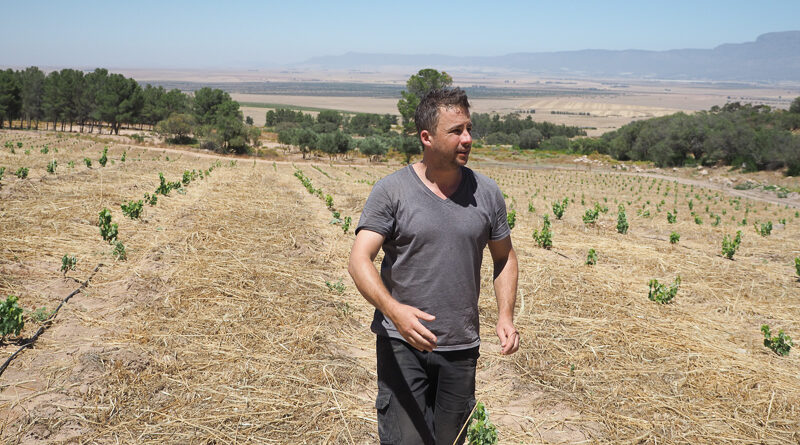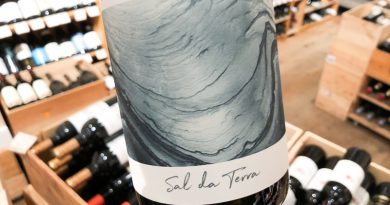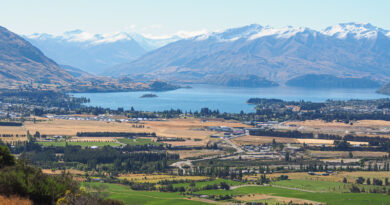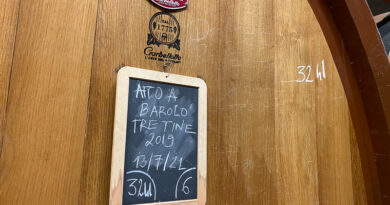In South Africa: visiting the new home of Testalonga
Craig and Carla Hawkins were the first of the Swartland Revolution crew to start their own vineyard project, back in 2015, when they moved to a farm in the northern reaches of the Swartland, called Banditskloof. The farm is nestled into the Olifantsberg mountain. With Treve Ring, I visited in November 2019 (our notes on the new releases at the end of the article are distinguished by our initials JG and TR).
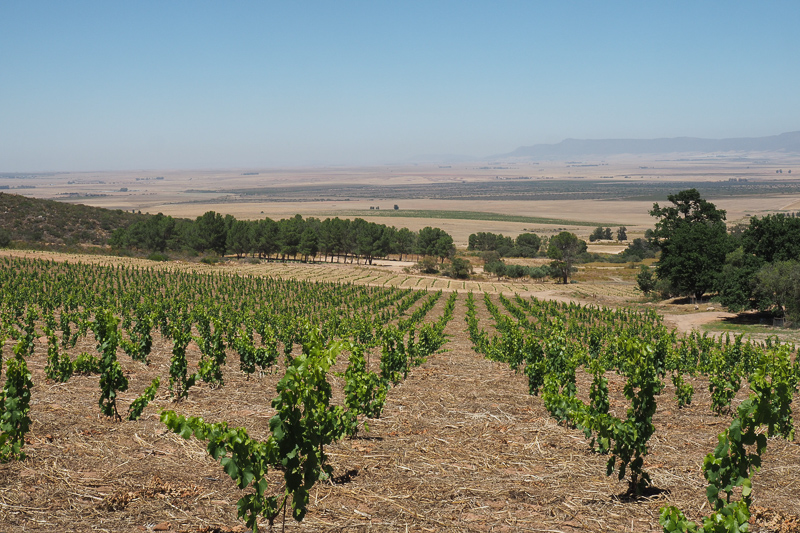
‘We came here in 2014, says Craig, ‘When the new owners came in at Lammershoek, we knew it was a good time to go out on our own. We looked at a property close to where Stompie is, but it was a bit small for what we wanted. We drove out to this property, which was advertised as having no electricity; there was nothing. This put a lot of people off. When I got here, I phoned Carla and said, I think we’ve got the spot. We paid 2.9 million rand for 135 hectares, which is dirt cheap.’
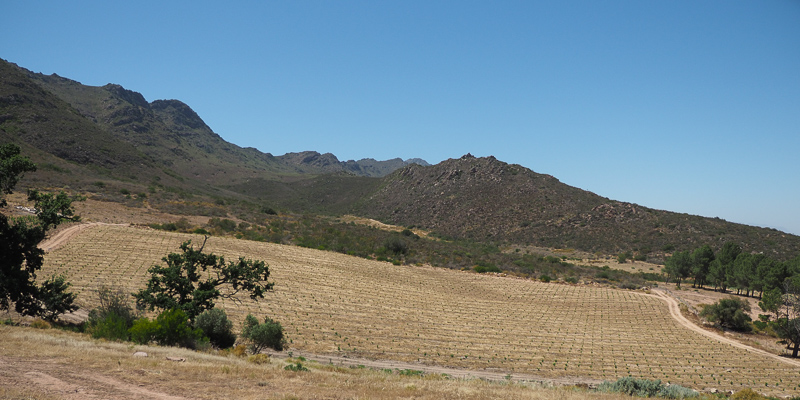
‘I came here with one guy, Motion,’ he says. ‘Every single stone wall here, he built. We ploughed fields and prepared for planting.’
We are at the fringes of the Swartland wine region: its boundary is at the top of the mountain the property runs up against. On the other side is Olifsantsbergrivier, and Citrusdal is 25 km away. The altitude of the property is 350-480 m; it’s still warm here, but there are nice breezes.
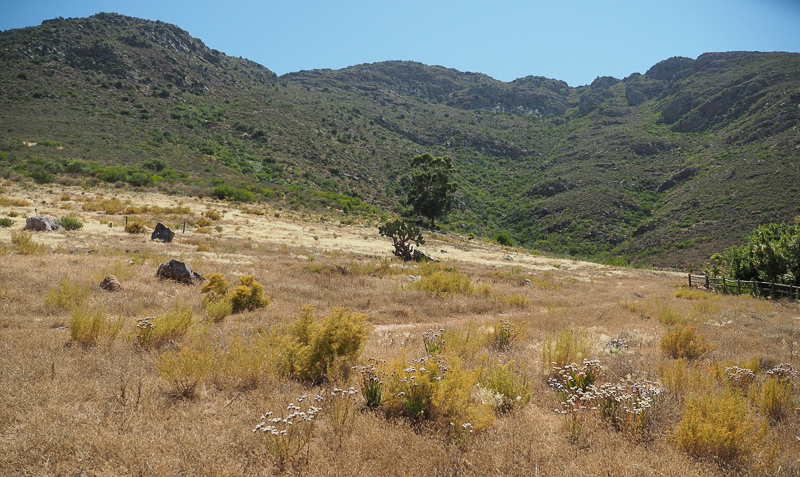
So far Craig and Carla have planted 4 hectares to begin with, but they will plant more. Some of the better spots haven’t been planted yet. ‘The reason we bought this place is that it’s away from everything, so we can just live our lives and be who we are,’ says Craig, ‘but also there is good soil for planting vineyards, and there is water. There are two springs coming out of the mountain.’
Soils are Table Mountain sandstone, and another soil that they call dirty sandstone locally, which is a slate-derived soil, with a bit of mica inside. It breaks fairly easily, and the roots can go through. ‘We got lucky on the analysis side,’ says Craig. ‘On the slopes we don’t have to add lime or anything.’
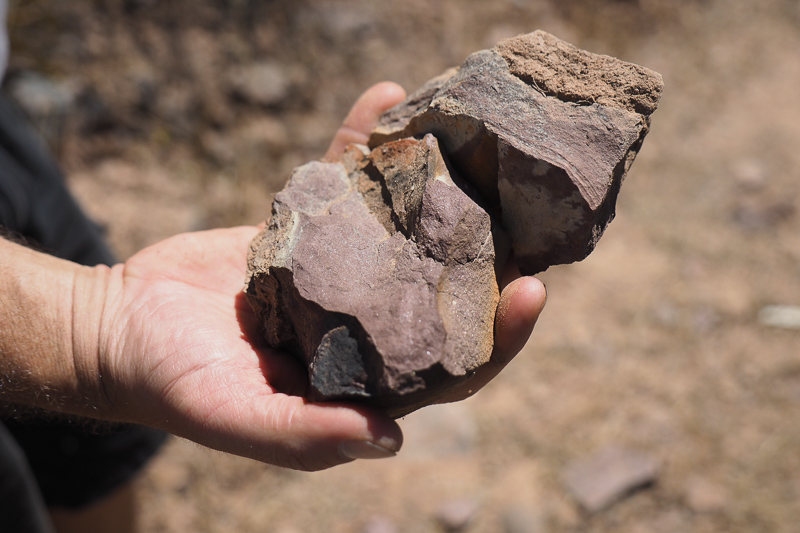
‘The previous farmer was a sort of hobby farmer, who sadly died.’ Craig explains. ‘He wasn’t making money. No one wanted the property because of the [lack of] electricity.’ They moved here and lived on generators for the first six months. ‘My neighbour was quite sceptical when we moved here.’
In South Africa the interest levels are insane, so borrowing from banks isn’t an option. They raised some funds from family, and are paying them back gradually. And they are doing a lot of the work by themselves, to save money.
He ripped the new vineyard four times and took out the rocks. In the bottom section he had to add some lime and rock phosphate, but the top was OK. The plantings this year included three varieties: one third each of Mourvèdre, Carignan, and Maccabeu. Then he also has Grenache Blanc and Grenache Noir in last year’s plantings, with a total of four hectares.
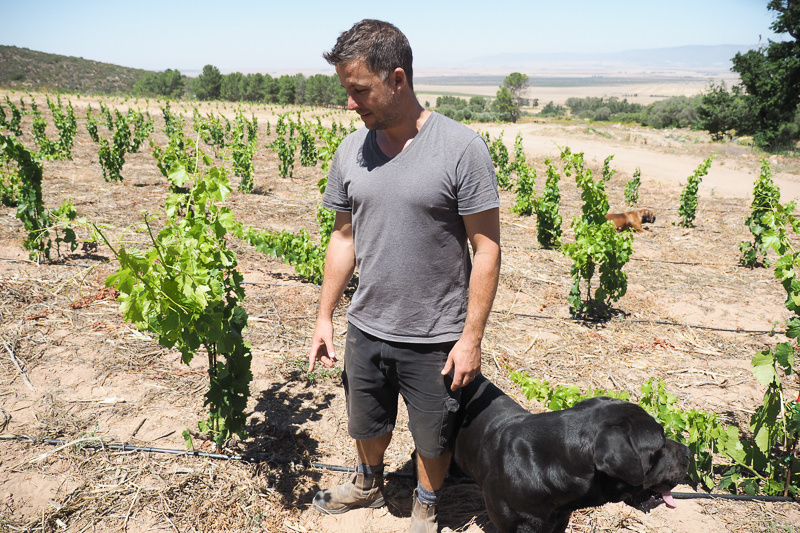
Last year they had around 98% take on the Maccabeu plantings; this year they had 20% loss on 1000 vines. It was a problem with the grafting. ‘It’s a pain in the ass, but it is was it is,’ he says. ‘There is a lot of new planting material coming into South Africa, and I don’t want to be the first to plant. That’s when the mistakes come out. I want to wait five years. It is not about being the first. Quality matters because this is for future generations.’
There are lots of snakes on the property. They lost a dog to a snakebite. ‘She killed four snakes and the fourth one got her,’ Craig shares.
They have two small dams, fed by the stream, and Craig has been irrigating the young vines, but he plans to take the water away. ‘For me there is no doubt that dry-farmed vines give you a bit more complexity. It is the fact that the vine has to struggle. For the wines I want to make, we get more character. There is no question, though: we do need water on the young vines. When I put the drainage in we dug down to 2 metres with an excavator and the roots were already down there.’

The vines are going to be grown as bush vines, with head pruning. They select the two strongest shoots, and tie them on a stake. Any shoot that is above eye level is cut through the node to kill it, and the top section dies. You tie it to a stake and then the lateral shoots emerge. The bottom ones are removed, and the bunch zone is created. The idea is to have a gobelet (bush) vine off the ground. ‘It takes quite a bit of thinking in the early pruning to establish it,’ says Craig. The number of heads depends on the vigour of the vine. They can decide: anything from six to eight. On one plot the vines are planted 2.5 x 2.5 m, and on another site 2.8 x 1.8 m.
Craig sees cover cropping as essential for good farming of vines. They planted a lot of daikon radish, but also a whole mixture of stuff. ‘In my first days at Lammershoek I took it a bit too far, not cover cropping.’
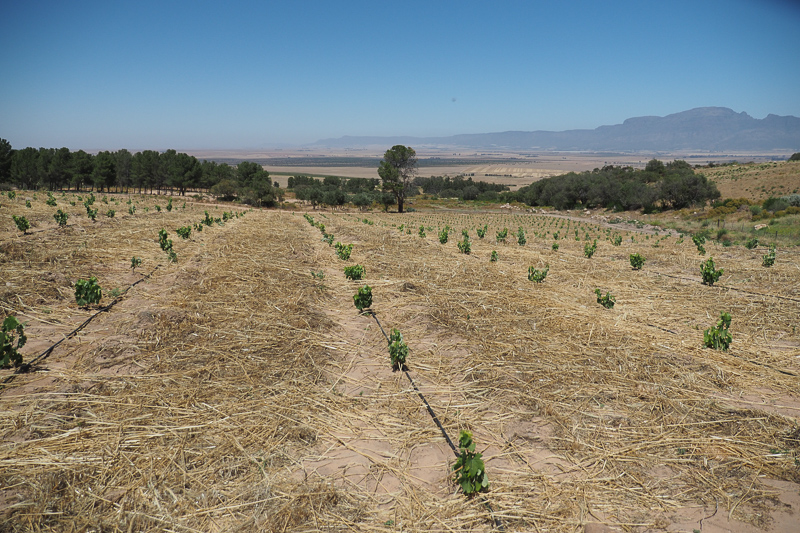
2021 will be the first harvest from this new farm, though all Testalonga’s winemaking moved over here in 2016. There’s a sizeable winery on site. Currently they buy in all their grapes, but the more new producers around, the more grape security becomes an issue. ‘I don’t have contracts with anyone, but I have very firm handshakes, and I know them really well,’ says Craig. ‘Our businesses are interlocked, which is important.’
He harvests in small plastic cases (18 kg or so), and has an 8 ton truck which he has a licence for to fetch the grapes. They are put onto a palate in the cold room where they stay at 6 C overnight, and then the next day they go into the cellar.
Craig is very happy with the 2019s, which have been in bottle now nearly a month. ‘I want to produce the best wine I can,’ he says, ‘and the main thing for me is salinity and complexity.’ 2018 was a tight vintage because of the stress on the vineyards, but the 2019s are a bit more opulent.
‘My idea of terroir is single vineyard, single soil – and single cultivar, single soil. This is why we make 18 different wines. I’m showing 13 here, but I make another 5 for Japan. We sell on allocation because they have lots of different importers. When I sent a request out asking what people would like, the UK came back with the most. The UK is the largest market. I like it, it’s a very dynamic market. Japan is also very good. America is now starting to take off. ‘
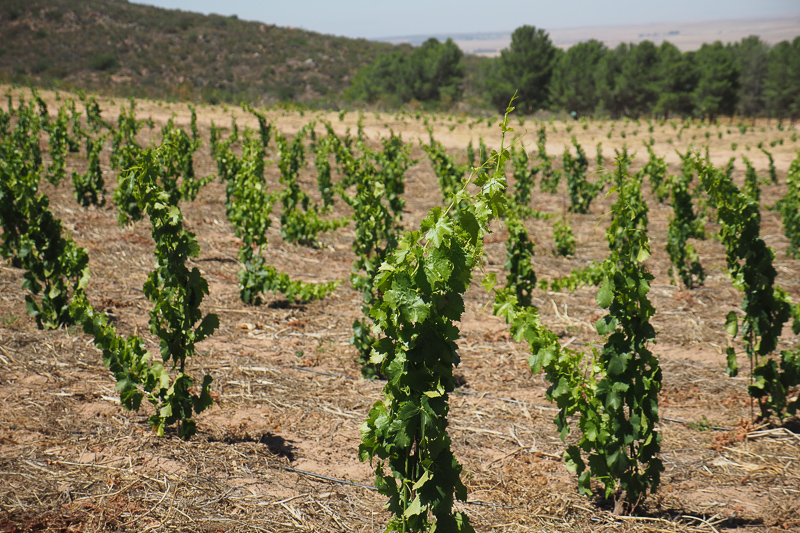
These are natural wines with very low levels of sulfur dioxide. ‘All sulphites are below 20 ppm total in 2019, but I know the wines will age,’ says Craig. ‘Cortez 2009 showed beautifully last week and there were no added sulphites. I work very clean in the cellar. Our VAs are really low, below 0.5, and the wines are completely micro-stable. We put a lot of effort into doing the right thing at the right time. We don’t just wait until bottling and then clean.’
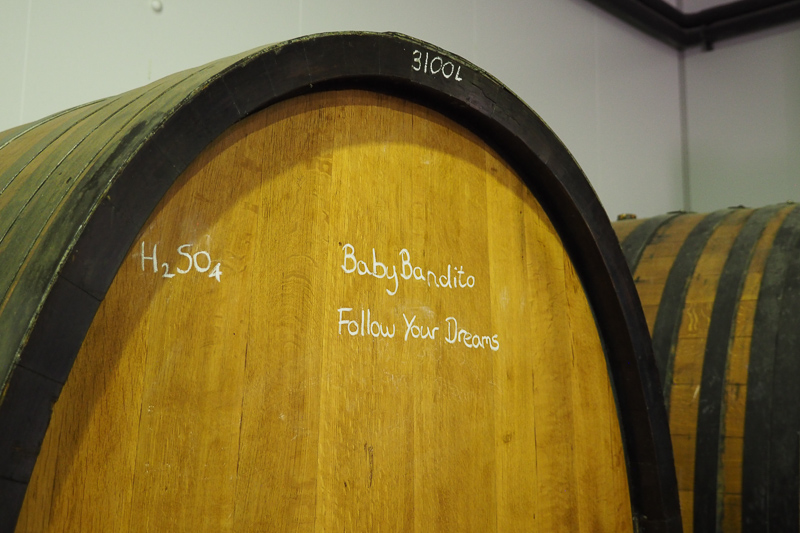
‘We try to improve every year and look for purity,’ says Craig. ‘One of the guys I admire the most is Dominic Belluard, of Les Alpes [Savoie]. I just like the line he has in his wines. They are the wines I like to drink. And people like this, I like to learn from.’
THE WINES

Testalonga Baby Bandito Keep on Punching 2019 Swartland, South Africa
The only vineyard not from the Paardeberg. It is from the sandstone soils behind the mountain their farm is on, so it is actually from Picketberg. 1961 plantings of old Chenin. Whole bunch pressed, two-thirds fermented in foudre, one-third in stainless steel, then blended and put back. Total SO2 is about 12 ppm, but he added 15 ppm. The pH is low at 3.1. Fine, bright, saline nose with taut citrus fruit. This is very pure and saline with a lovely line to it. Almost transparent with great intensity and purity. 94/100 (R145) (JG)
This organic Chenin Blanc is from Pieketberg sandstone, planted 1961. After a whole bunch press, 2/3 fermented in foudre with the rest in stainless. After blending, this moves to wood and stainless to rest. Pouring a deeper hue, this streams with tight lime, a saline wash, and light lemon friskiness. The photo is one Craig’s brother took in Cambodia. This is their largest production line, and great value. 90/100 (TR)

Testalonga El Bandito Lords of Dogtown 2019 Swartland, South Africa
13 rows of Chenin planted in 1981, just 500 litres made, normally just sold to South Africa and Japan. The UK got 12 bottles last year. No added sulphites. Aromatic, saline nose with nuts, spice and taut citrus and apple fruit. Pristine and bright with a saline apple and lemon quality. Bright and taut and complex. 95/100 (JG)
Carla took the label photo of donkeys and cows. This was from 13 rows of Chenin planted in 1981 in the Paardeberg, close to Adi’s property. They only made 500 in one very old barrel, and the wine is typically split between SAF and Japan. Bit shy at the moment, with beauty salinity, tight green apple, and a light grip on the lean, nimble palate. 91/100 (TR)
Testalonga El Bandito Mangalita Harslevelu 2019 Swartland, South Africa
From Tom Lubbe’s old Observatory farm, which Craig takes almost all the grapes from. The farm has been for sale for a long time, but isn’t financially viable at 7.5 million including VAT, although it does have a house and a cellar (where Craig made his first wine). Craig would love to plant this on Banditskloof. 12% alcohol. Complex, broad, nutty nose with taut citrus and pear fruit. Brooding and pure. Crystalline and saline with amazing brightness and a keen lemony edge. Has piercing acidity and purity. Lovely, pristine and very pure. 95/100 (JG)
From a single vineyard on the old Observatory farm, this dry farm Hárslevelü was planted on decomposed granite in 1971. Craig fell in love with the grape while making wine for Dirk Niepoort’s project in Austria, and hopes to plant it on his home site in future. After whole bunch pressing, this was native fermented in old French oak and bottled unfined, unfiltered with minuscule suphur. Pouring a light golden hue, dusty stones, wild meadow herbs preview a sleek palate, scented with green fig, green apple, prickly pear and quince blossoms. There’s a slight grip to the palate, adding another level of interest to this already highly interesting wine. 92/100 (TR)

Testalonga El Bandito Cortez 2019 Swartland, South Africa
This comes from the Observatory farm planted in 1982. The label for Cortez changes every year, and in 2019 it is a 20 year old picture of Carlo Lupori from Les Caves de Pyrene (the UK agents). The same winemaking since 2015. One-third stainless steel, two-thirds 500 litre barrels. 12.5% alcohol. This is textured and saline with citrus and pear fruit, as well as some apple notes. Intensely mineral and with edges. Such precision to this wine. Amazing finesse. 96/100 (JG)
From the 1972 planted Observatory Farm, where Craig takes nearly all the fruit (Jurgen makes some Shiraz), this Chenin aged 2/3 in 500L barrels, 1/3 in stainless, before blending and resting together. Gently expansive on the bright and pristine palate, with quince, yellow apple, prickly pear, and fantastic salinity. Lovely length in this moreish wine. The photo gracing the label changes every year. 93/100 (TR)

Testalonga Baby Bandito Stay Brave 2019 Swartland, South Africa
Skin contact Chenin Blanc from koffieklip over granite soils on the outskirts of the Paardeberg. Waxy, nutty, harmonious and complex with some rich pear and peach notes. Has some orange peel. Fresh and vital and showing lovely balance. Makes you salivate. 93/100 (JG)
With 10 days maceration, this Chenin is the introduction to Testalonga’s skin contact wines. Sourced from koffieklip over granite soils outside of Paardeberg, this deeper golden hued wine is gripped tightly, holding herbal melon, golden apples, to a finely saline finish. 91/100 (TR)
Testalonga Sweet Cheeks 2019 Swartland, South Africa
10% alcohol. Muscat Alexandria – eating grapes. Highly aromatic with grapey notes on the nose. Dry, grapey and fresh with lovely crispness. Some skin contact here but it’s quite subtle: an example of using skin contact to uplift the wines. Achieving the right balance so that it doesn’t dominate the wine. This is pristine. 92/100 (JG)
Sweet is right. This comes from Muscat Alexandria = eating grapes. Light honeyed nose, with orange pith, subtle rosewater, melon, and grapefruit pith, lightly riffed via some skin contact. 10%, but not watery or dilute at all. 90/100 (TR)
‘A lot of skin contact is like hoppy craft beer,’ says Craig. ‘It is very easy to make a skin contact wine without balance.’
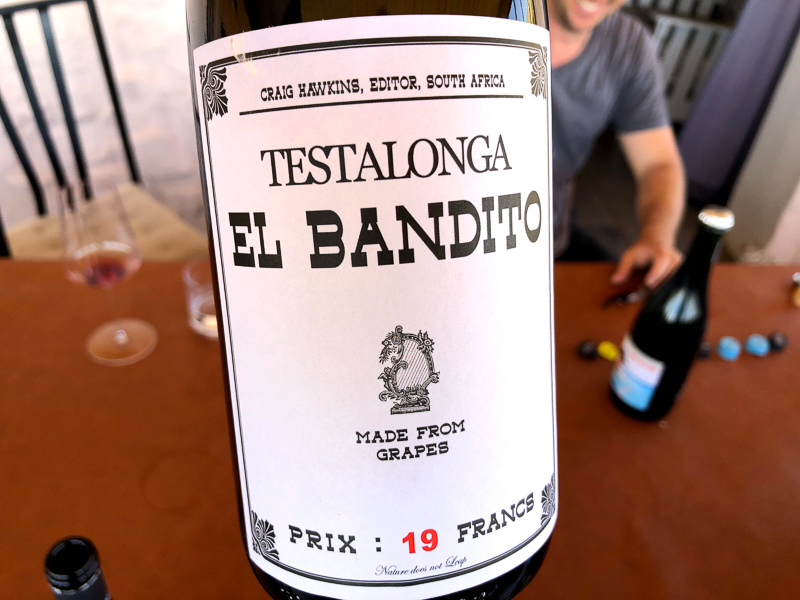
Testalonga El Bandito Skin 2019 Swartland, South Africa
This is the first wine Craig made. This is where it started, with two barrels. It is also from the observatory and it always gives a saline note on the nose. 10-12 days on the skins, destemmed. Mineral, complex, stony and intense. Wet stones, herbs, spice and minerals alongside pear and apple fruit. Beautiful salinity with a tart apple note on the finish. Has a fine trace of green herbs. Lovely savoury edge here. 95/100 (JG)
From the bottom of Observatory vineyard, where there is more water, this Chenin was destemmed and had 12 days maceration. Lightly musty honeyed note, with wild herbal meadow grass, flake salts on an expansive, savoury edged palate. Lovely grippy note on the finish. 92/100 (TR)
‘Reds are all fermented on the stems. Whole bunches crushed. I find too many microbial problems with foot treading. Residual sugar and warm climates don’t go well together.’
Testalonga Baby Bandito Follow Your Dreams 2019 Swartland, South Africa
Carignan, a portion sold to Andrew Wightman by Lammershoek. Aged in two foudres, making 7000 litres. Supple, juicy and sweetly fruited with nice texture and some raspberry and cherry fruit as well as some wild strawberries. Crunchy and fresh with nice juiciness. 93/100 (JG)
This Carignan aged in 2 old foudre. Wild darting cherry, plum, wild raspberry, is lightly seasoned with spicing, and hugged with finely sticky / grippy tannins. Fresh, with a slender structure. 91/100 (TR)
Testalonga El Bandito Queen of Spades Swartland, South Africa
Hillside vineyard. Just 300 litres made. 11% alcohol. Tinta Amarela, it may be the only planting in the Swartland. It was planted by mistake: the grower thought it was Tempranillo. Sappy, green, juicy and bright with nice fresh acidity and vibrant raspberry and cherry fruit. Such finesse and elegance. A very pure wine of amazing finesse. Funky in a clean way. 95/100 (JG)
Craig became familiar with Tinta Amarela after working with it in Portugal, with Dirk Niepoort. Rare to find in SAF, the grower planted it in the Swartland believing it to be Tempranillo. This was fermented on stems with crushed berries, and 10 days maceration. Broken stones, plum, wild blackberries and thorns, this has a slight lick of tannins and a lot of lift and purity. The label photo was taken at Burning Man. 92/100 (TR)
Testalonga The Dark Side 2019 Swartland, South Africa
Syrah, from the Hillside vineyard shared with Jurgen Gouws and Stompie. Juicy and bright with red cherries and raspberries as well as a bit of blackberry. Has some fine redcurrant notes, too, with a twist of sappy green detail and some pepper. 94/100 (JG)
Syrah is not Craig’s favourite grape to work with. From a hillside farm and decomposed granite, this opens with a heady flush of reduction that moves into soft wild cassis, thorns, violets, and black olives. Very spicy and peppery through the finish. 90/100 (TR)
Is Syrah the great grape of the Swartland? ‘No,’ says Craig. ‘It is way too hot here. If we were to have a generic grape, like Marlborough in NZ has Sauvignon Blanc, then we should go with Grenache. There’s not a lot of it in South Africa.’

Testalonga Monkey Gone to Heaven 2019 Swartland, South Africa
Mourvedre. Lovely elegance here. Has a sappy edge and some sweet, silky, fine grained, slightly chalky cherry and berry fruit. So bright and focused with nice precision and lovely elegance. So pure and fine. Has a vitality and brightness, and very light on its feet for a Mourvedre. So lovely. 96/100 (JG)
This Mourvèdre comes from MacRoberts Farm, just outside of Avonsdale. Wild blackberry, plum, sapid plums, violets and earthy stems, with potent grip and ample peppery spices. Great freshness, clocking in at 12.5% 92/100 (TR)
Testalonga I Am a Ninja 2019 Swartland, South Africa
11% alcohol. Chenin, French dry (8 g sugar, 10 g acid). Bottled at 35 g/l sugar, racked very clean. Pet Nat is a real art. This is disgorged or it would hit the roof: it has 7 bars of pressure. Appley and bright with tart citrus notes and a bit of sweetness on the finish. Fruity and delicious. 89/100 (JG)
Chenin from the same vineyard as Keep on Punching, this pét-nat was bottled at 35 g/L, but then racked until clear and disgorged, finishing with 8 g/l RS, 10 TA, 7 bars, 11%. Apple, orange pith, herbal lees is gripped tightly, finishing with a gentle sweetness. 89/100 (TR)
Testalonga I Wish I was a Ninja 2019 Swartland, South Africa
8% alcohol. On the picture, Paul Jordaan, nicknamed Silent Bob. This is Colombard. 2.95 pH, 11 g acid, sugar 26, 7 bars. Crisp, zesty and juicy and really pure with nice sweet fruit. Lemony and zippy with some table grape sweetness. Fun and bracing with crisp acidity. 88/100 (TR)
The original pét-nat, this Colombard finished with 7 bars pressure, 26 g/L RS, pH 2.95, 11 TA, 8%. Lovely gentle sweetness, with melon, grapefruit, yellow apple and a fresh lightness on the finish. ‘Salt and vinegar’, as Craig terms it. Beautiful lightness. 90/100 (TR)
Find these wines with wine-searcher.com
See also:

